Saïs Report, 2007
Season Reports
Saïs Report, 2007
Prehistoric Studies
Gregory Gilbert and Tonny de Wit worked very hard to study and record all of the ‘flint’ or more properly chert tools and chips from the working of the tools (debitage) from the Prehistoric excavation in Excavaation 8 in 2005. The date range from the Neolithic to the Predynastic Buto-Maadi period gave an unique insight into the changing economic practices of the communities at Sais from around 4,200 to 3,500 BC. In all almost 400 catalogued items were studied along with thousands of chips and other debitage collected from the excavation. The complete sequence of manufacture of bladelets could be demonstrated with the survival of several cores from which blades had been struck.
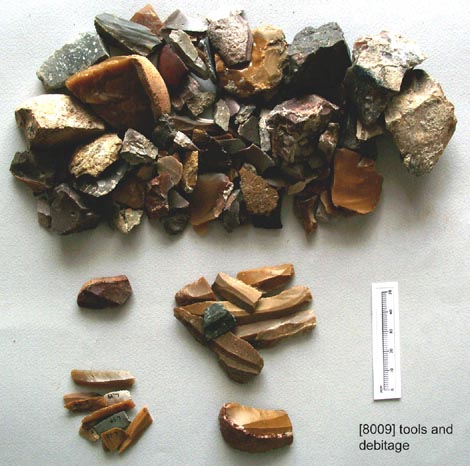
The blades would have been used for cutting meat, preparing skins, scraping bark or fruit, medical purposes, cutting hair — in fact any of the myriad uses needed of a penknife. In addition, there were also the bifacial sickle blades from the Late Neolithic period which suggest that the population at Sais were partly sedentary and growing crops in the area, to be harvested with these stone sickle blades.
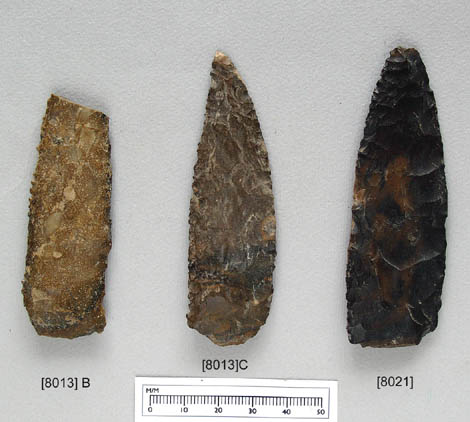
Three fragments of broken arrowheads show that people were also hunting at this time.
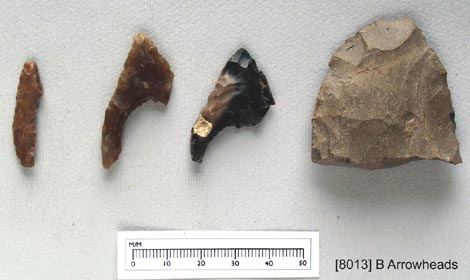
The Buto-Maadi period flints lack something of the sophistication of the earlier Neolithic people suggesting, perhaps, that they had access to better cutting tools with metal blades. Nevertheless their handy blades and microliths (that is very small points and bladelets) suggest that flint tools continued to be valued for their sharpness and availability. There are good chert sources on the west side of the delta and to the south, but the presence of the flint may indicate that in the Neoltihic period there was already a regional network moving raw materials from the deserts to the floodplain.
Geoffrey Tassie had the task of sorting through around one thousand pieces of stone collected from the Prehistoric excavations. Many of the fragments were also pieces chipped or broken off larger stone tools, but some apparently anonymous stones were identified by Tass’s expert eye as hand axes from the Neolithic period.

In addition, the large numbers of grinding stones and mortars made from orthoquartzite suggested a link with the main quarries at Gebel el Ahmar to the east of Cairo.
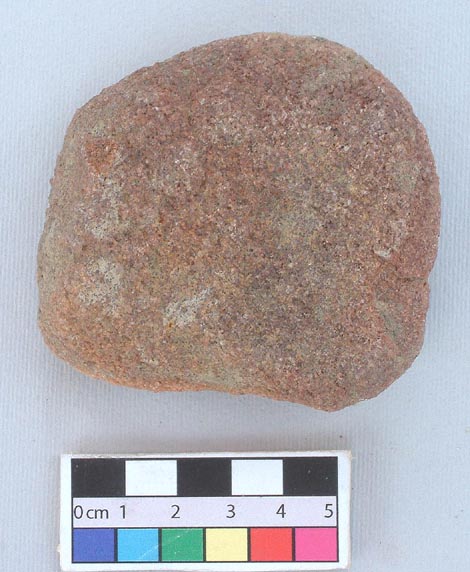
The rough, sandy texture of this stone makes it ideal for grinding grains or other seeds. It again suggests that much grain processing was taking place in the Neolithic settlement. The hand axes were used for chopping small wood branches or bushes, for firewood or building materials. Smooth quartz pebbles were also most likely used for the find grinding of substances, such as yellow and red ochre, also found in the excavation.
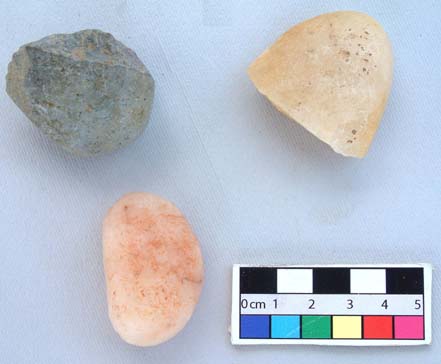
The powder could be used for pigment to colour clothing or paint for bodies and faces. Finally, one particular stone had shape of the planet Saturn and its rings to our eyes. It was recorded along with the other stone material and it is likely that stones such as this with a distinctive shape were also collected by people in ancient times, as they have been recorded at many other sites from different periods throughout the world. The significance of the ‘Saturn’ shape to Neoltihic people, is however, a matter of discussion.
Finally, Penny Wilson drew the remaining pottery of the Neoltihic period. All of this material is now being prepared for the Prehistoric Sais volume. The drawings will be inked in, the catalogues ordered and material studied and compared with that from other sites. There is still a great deal of work to be done and, no doubt, discussions over terminology of technological techniques, dating of the material, identification of the material and other such important matters will continue between Netherlands, Australia, Egypt and the UK by e-mail and telephone.

